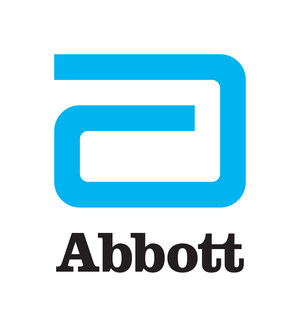The New England Journal of Medicine Publication of SPIRIT IV Trial Results Confirm Superior Safety and Efficacy of Abbott's XIENCE V(R) Drug Eluting Stent Compared to TAXUS
Separate, Retrospective SPIRIT IV Cost-Effectiveness Analysis Presented Earlier this Year Concludes XIENCE V Is Economically Dominant Compared to TAXUS
ABBOTT PARK, Ill., May 5 /PRNewswire-FirstCall/ -- Findings from Abbott's SPIRIT IV trial, one of the largest randomized clinical trials comparing two drug eluting stents, with 3,690 U.S.-based patients, were published today in The New England Journal of Medicine. The published study results show that one year after a stenting procedure, patients treated with Abbott's market-leading XIENCE V® Everolimus Eluting Coronary Stent System were significantly less likely to have a major adverse event such as a heart attack, repeat procedure or cardiac death, compared to patients treated with a TAXUS® Express2™ Paclitaxel-Eluting Coronary Stent System (TAXUS). The SPIRIT IV trial also showed that patients treated with XIENCE V were considerably less likely to experience a blood clot (stent thrombosis) compared to patients treated with TAXUS. These results were originally presented during the September 2009 Transcatheter Cardiovascular Therapeutics (TCT) conference.
In the SPIRIT IV trial's primary endpoint of target lesion failure (TLF), XIENCE V demonstrated a statistically superior 38 percent reduction compared to TAXUS at one year (4.2 percent for XIENCE V vs. 6.8 percent for TAXUS, p-value=0.001). TLF is defined as a composite measure of important efficacy and safety outcomes for patients and includes cardiac death, heart attack attributed to the target vessel (target vessel myocardial infarction), and ischemia-driven target lesion revascularization (TLR). The SPIRIT IV trial also found that the one-year rate of blood clots (stent thrombosis) with XIENCE V is among the lowest reported to date with any drug eluting stent (0.29 percent per Academic Research Consortium definition of definite/probable stent thrombosis).
In a subgroup analysis of more than 1,100 patients with diabetes, who typically are sicker and have more challenging artery disease, XIENCE V demonstrated a numerically lower TLF rate compared to TAXUS at one year (6.4 percent for XIENCE V vs. 6.9 percent for TAXUS, p-value=0.80). In the critical safety endpoint of stent thrombosis as presented during TCT 2009, XIENCE V demonstrated a 40 percent reduction compared to TAXUS in patients with diabetes (per ARC definition of definite/probable stent thrombosis, 0.80 percent for XIENCE V vs. 1.33 percent for TAXUS, p-value=0.52).
"With more than 3 million stent procedures being performed annually worldwide, determining the safety and efficacy differences between various drug eluting stents has important implications for societal health," said Gregg W. Stone, M.D., professor of medicine at Columbia University Medical Center; immediate past chairman of the Cardiovascular Research Foundation in New York; and principal investigator of the SPIRIT IV trial. "With nearly 4,000 patients studied, SPIRIT IV represents the largest randomized trial of two drug eluting stents completed to date, and found that the everolimus-eluting stent significantly reduces a patient's risk of experiencing a heart attack, stent thrombosis, or the need for a repeat procedure within one year, compared to the paclitaxel-eluting stent. Based on these results, and results from the 1,800-patient COMPARE study conducted in the Netherlands, the everolimus-eluting stent has set a new standard for patient safety and efficacy."
Separately, in a recent retrospective cost-effectiveness analysis of SPIRIT IV data, researchers found that the clinical benefits offered by XIENCE V translated into lower overall medical costs at one year after the stenting procedure. The SPIRIT IV cost-effectiveness analysis, presented by David Cohen, M.D., MSc, of St. Luke's Mid America Heart Institute in Kansas City, Mo., in March 2010 at the Optimizing PCI Outcomes symposium sponsored by the Cardiovascular Research Foundation, found that one-year total medical costs (initial hospitalization plus follow-up) were approximately $150 lower for patients treated with XIENCE V than those treated with TAXUS. When costs not related to the original treated vessel (non-target-vessel-revascularization) were excluded, the one-year medical costs were approximately $450 lower with XIENCE V than TAXUS. The XIENCE V and TAXUS stents are competitively priced.
"The cost-effectiveness analysis of SPIRIT IV shows that a stent designed to deliver outstanding clinical benefits can deliver economic benefits as well," said Dr. Cohen, who is the lead investigator of the SPIRIT IV cost-effectiveness analysis. "Since the findings were derived from a multicenter, comparative trial with only clinical follow-up, these results may be generalizable to most U.S. practice settings."
"The SPIRIT IV data, published today in The New England Journal of Medicine, have changed clinical practice as more and more physicians around the world have embraced the XIENCE V drug eluting stent. With the additional SPIRIT IV cost-effectiveness analysis, we have observed favorable economic data based upon the strong clinical results. These findings should prove valuable as hospitals evaluate different treatment options for coronary artery disease patients," said Charles A. Simonton, M.D., FACC, FSCAI, divisional vice president, Medical Affairs, and chief medical officer, Abbott Vascular.
More About SPIRIT IV Results
Clinically, in addition to demonstrating superiority in the primary endpoint of TLF, XIENCE V demonstrated a statistically significant 46 percent reduction in TLR (repeat procedure) compared to TAXUS at one year (2.5 percent for XIENCE V vs. 4.6 percent for TAXUS, p-value=0.001). TLR is one of the major secondary endpoints of the SPIRIT IV trial.
Per protocol definition of stent thrombosis (blood clots) at one year, XIENCE V demonstrated an observed 80 percent reduction compared to TAXUS (0.17 percent for XIENCE V vs. 0.85 percent for TAXUS, p-value=0.004). Per Academic Research Consortium (ARC) definition of definite/probable stent thrombosis, XIENCE V demonstrated an observed 74 percent reduction compared to TAXUS at one year (0.29 percent for XIENCE V and 1.10 percent for TAXUS, p-value=0.004). The ARC definitions of stent thrombosis were developed to harmonize the definition of stent thrombosis across various drug eluting stent trials.
In a retroactive look at the economics of using XIENCE V versus TAXUS from the SPIRIT IV trial, it was observed that XIENCE V was economically dominant over TAXUS based upon the clinical results. At one year, total medical costs (initial hospitalization plus follow-up) were $146 lower per patient with XIENCE V than with TAXUS. When costs not related to the original treated vessel (non-target-vessel-revascularization) were excluded, the difference between the two stents became more pronounced, amounting to a cost savings of $439 per patient with XIENCE V compared to TAXUS (p=0.02). Excluding the costs not related to the original treated vessel reflects the cost difference specific to the performance of the two stents.
The SPIRIT IV cost-effectiveness analysis was based on a retrospective review of prospectively collected medical resource utilization for all patients enrolled in the SPIRIT IV trial for initial hospitalization and one year after enrollment. Cardiovascular hospitalizations, revascularization procedures, diagnostic catheterization and dual-anti-platelet therapy costs were included. The analysis assumed equal stent costs for the XIENCE V and TAXUS stents.
More About XIENCE V
Abbott's market-leading XIENCE V is used to treat coronary artery disease by propping open a narrowed or blocked artery and releasing the drug, everolimus, in a controlled manner to prevent the artery from becoming blocked again following a stent procedure.
XIENCE V is built upon Abbott's market-leading bare metal stent, the MULTI-LINK VISION® Coronary Stent System. The VISION platform is designed to facilitate ease of delivery, making it easier for physicians to maneuver the stent and treat the diseased portion of the artery.
In some geographies, Abbott supplies a private-label version of XIENCE V to Boston Scientific called the PROMUS® Everolimus-Eluting Coronary Stent System. PROMUS is designed and manufactured by Abbott and supplied to Boston Scientific as part of a distribution agreement between the two companies.
Everolimus, developed by Novartis Pharma AG, is a proliferation signal inhibitor, or mTOR inhibitor, licensed to Abbott by Novartis for use on its drug eluting stents. Everolimus has been shown to inhibit in-stent neointimal growth in the coronary vessels following stent implantation, due to its antiproliferative properties.
XIENCE V is indicated for improving coronary luminal diameter in patients with symptomatic heart disease due to de novo native coronary artery lesions (lesions less than or equal to 28 mm). Additional information about XIENCE V, including important safety information, is available online at www.xiencev.com or www.abbottvascular.com/en_US/content/document/eIFU_XienceV.pdf.
About Abbott Vascular
Abbott Vascular is a global leader in cardiac and vascular care with market-leading products and an industry-leading pipeline. Abbott Vascular offers a comprehensive cardiac and vascular devices portfolio, including products for coronary artery disease, vessel closure, endovascular disease, and structural heart disease.
About Abbott
Abbott (NYSE: ABT) is a global, broad-based health care company devoted to the discovery, development, manufacture and marketing of pharmaceuticals and medical products, including nutritionals, devices and diagnostics. The company employs more than 83,000 people and markets its products in more than 130 countries.
Abbott's news releases and other information are available on the company's Web site at www.abbott.com.
SOURCE Abbott
WANT YOUR COMPANY'S NEWS FEATURED ON PRNEWSWIRE.COM?
Newsrooms &
Influencers
Digital Media
Outlets
Journalists
Opted In





Share this article